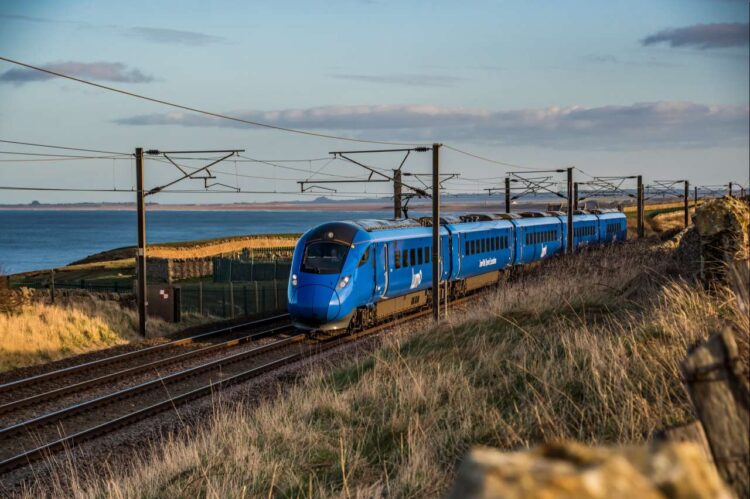Last Friday, 13th September, a Class 807 for Avanti West Coast built by Hitachi became the 300th train that the company has built for the UK railway network.
Hitachi’s first train for the UK was a Class 395 Javelin train built in June 2009. This latest Class 807 for Avanti West Coast represents a significant milestone in the transformation of Britain’s railways.

During the last 15 years, through its collaboration with rail industry partners, Hitachi trains can now be seen across the UK from Penzance to the Scottish Highlands.
Included in the diverse fleet that Hitachi has delivered are the Class 385s which are Scotland’s fastest commuter trains and used on Scotland’s Central Belt, the Class 800s on the East Coast Mainline, and Class 395s, which are the UK’s fastest passenger trains and used the high-speed HS1 line from St Pancras International.
By setting new standards for reliability and connectivity, Hitachi trains have revolutionised rail travel in the UK, and feature in ten fleets.
Their reliability is three times higher than the industry average, and collectively they clock up enough miles to travel to the moon and back over 100 times every year.

Through winning numerous industry awards, Hitachi has been recognised for the outstanding performance of its trains, including Azumas operated by London North Eastern Railway, ScotRail’s Class 385, Hull Trains, and Lumo.
To achieve consistently high levels of reliability, Hitachi has invested in maintenance infrastructure and skills, including brand-new maintenance centres at Ashford, Doncaster, and Stoke Gifford in Bristol, all of which feature digital maintenance and digital asset monitoring facilities.
The company employs 2,100 highly skilled maintenance employees at 16 sites.
Each year, Hitachi’s maintenance operations contribute £500 million gross value to the UK economy, which extends to leveraging an extensive UK supply chain.
Earlier this year, Hitachi Rail completed the acquisition of Thales’ Ground Transportation Systems business (GTS), which increased the company’s payroll to 24,000 colleagues across 51 countries.
By acquiring Thales’ Ground Transportation Systems, Hitachi has expanded its product and technology portfolio to include delivering signalling in the UK.
Hitachi Rail’s SelTrac™ signalling technology underpins 60% of Transport for London’s transport network, making the company responsible for over one million passenger journeys each day in the city.

“Delivering our 300th UK train is symbolic of what the rail industry can achieve through strategic partnership.
“Transforming levels in reliability, capacity and performance across Britain’s railways is only possible due to quality of industry partners we have in the UK.
“Going from 1 to 300 trains in just 15 years is credit to incredible people that have embodied the spirit of Hitachi Rail. With exciting innovations in green and digital technology being developed in the UK, Hitachi Rail is already working towards the future.”
Jim Brewin, Chief Director of UK & Ireland Hitachi Rail





Responses
300 trains with horribly uncomfortable seats. A record to be really proud of.
“Their reliability is three times higher than the industry average”
Really? The GW 80x trains I drive are pretty unreliable. I can’t remember the last time I had one which had all its engines working